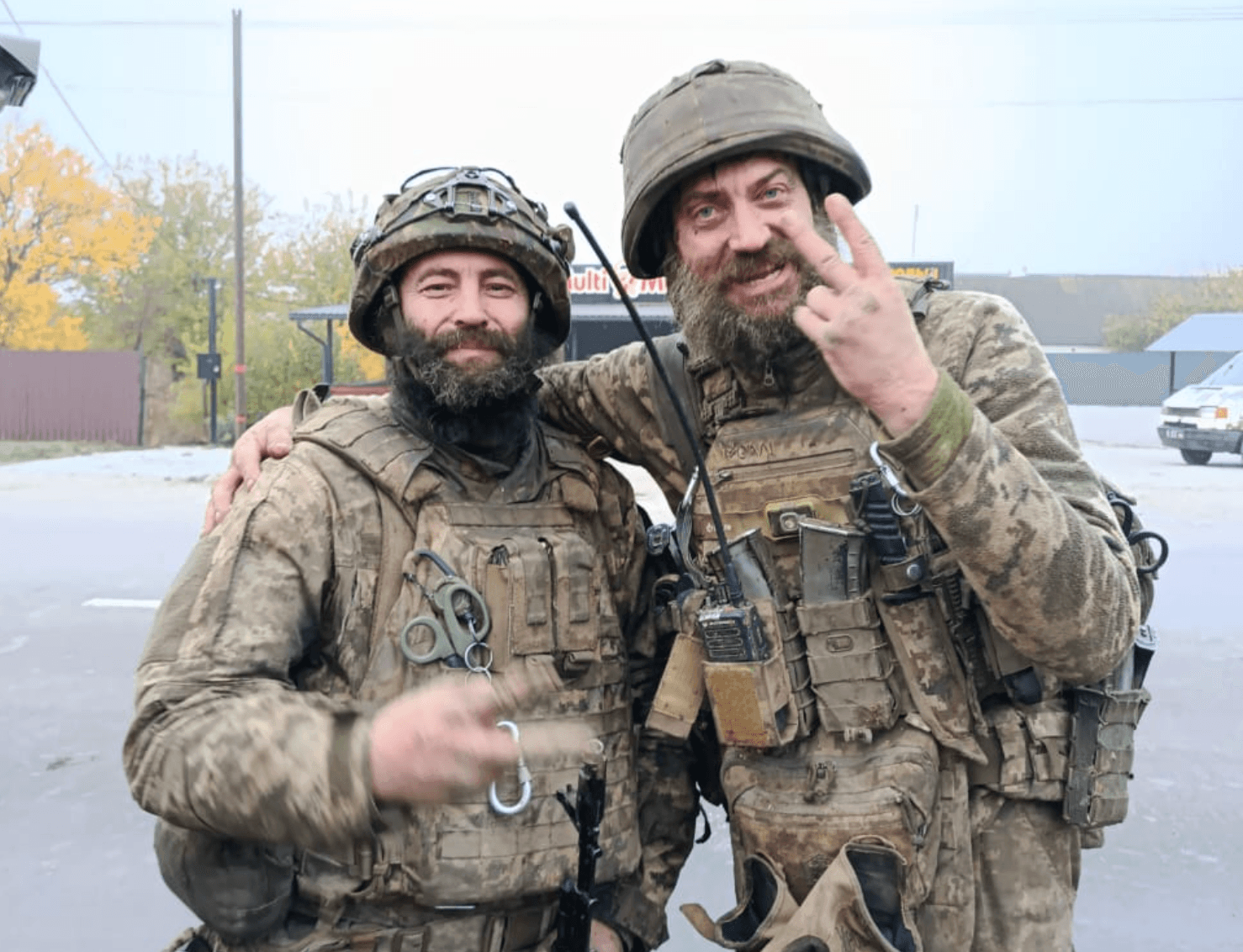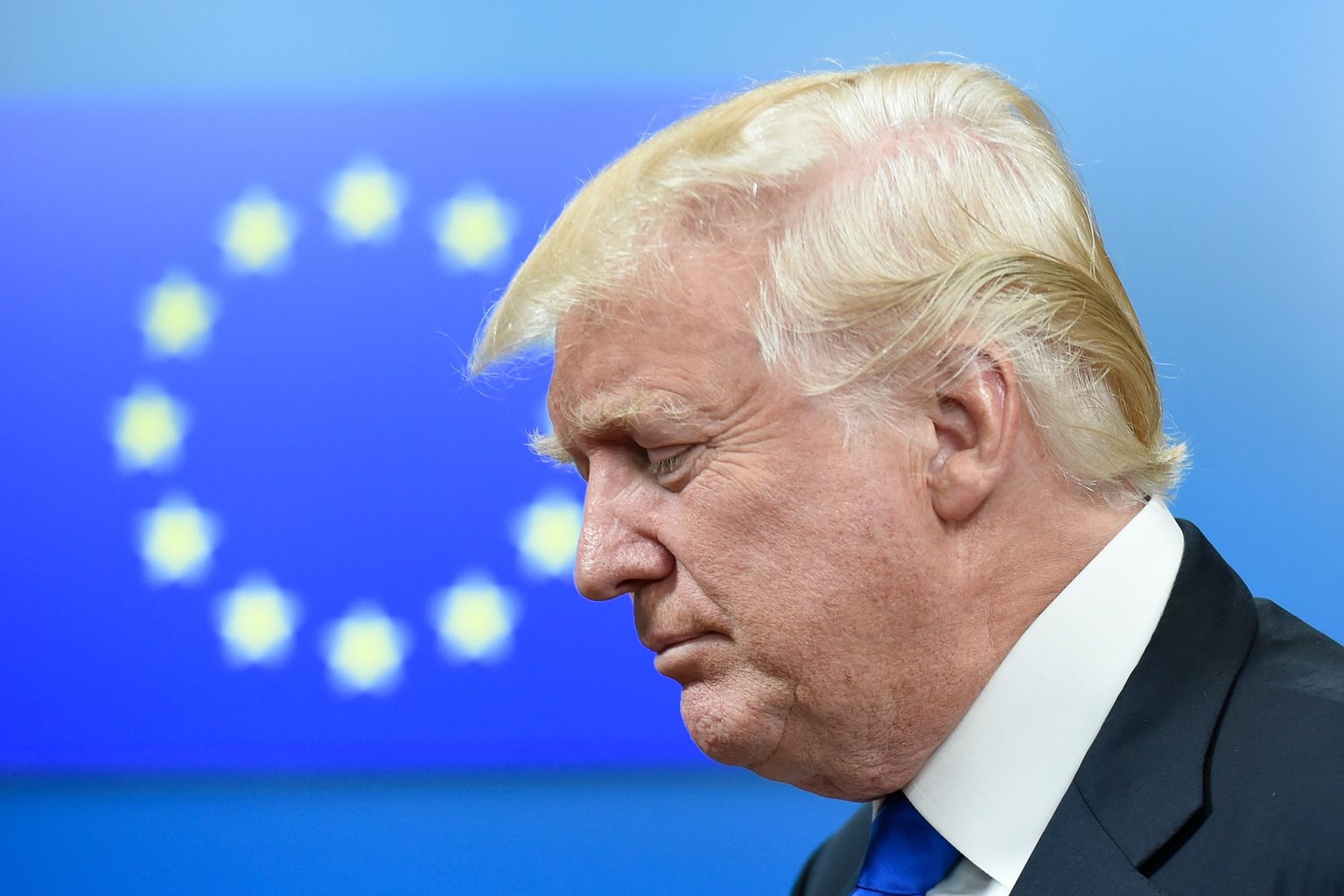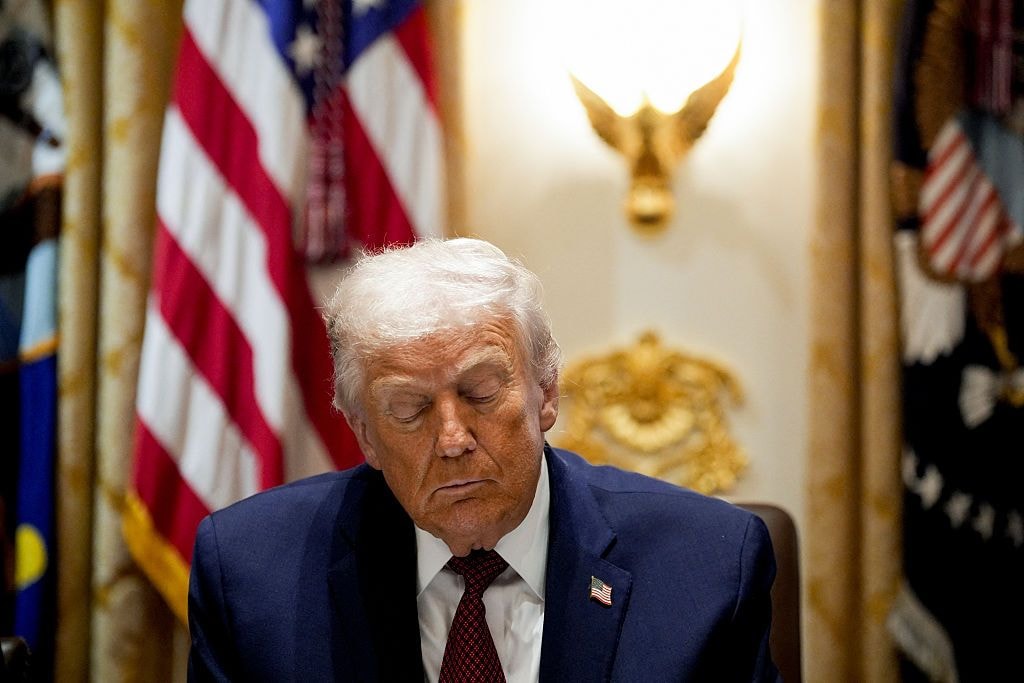
Why can't the West match Russia's ammunition production?
The Western world never thought it would need to make this much gunpowder again. It's now struggling to compensate for 'strategic bottlenecks,' including dependence on China.
A technician of German arms maker Rheinmetall labels 155mm shells for the Panzerhaubitze 2000 howitzer at the company’s facility in Unterluss, Germany, on June 6, 2023. (Axel Heimken / AFP via Getty Images)
Editor's Note: This article has been updated to reflect new details of BAE Systems' new chemical process that the company confirmed to the Kyiv Independent after initial publication.
The West is failing to catch up to Russia's production of the most basic unit of war for the past half-millennium — gunpowder.
The modern propellants and explosives that power war have largely been offshored. While Western manufacturers are churning out shell casings, they are short on the materials to fill them with. A dearth of ammunition from NATO allies has long hampered Ukraine, but is more recently alarming the Western alliance.
"Putin's war machine is speeding up, not slowing down," NATO Secretary General Mark Rutte said at a June 9 speech in London. "In terms of ammunition, Russia produces in three months what NATO produces in a whole year."
"Russia could be ready to use military force against NATO within five years. Let's not kid ourselves: We are all on the Eastern flank now," Rutte continued.
It is no secret that Ukraine has relied on the West for ammunition since Russia's full-scale invasion. NATO's militaries have been sounding the alarm as to dwindling artillery reserves since at least late 2022. But they have been far slower in ramping up production than Russia.
Jammed between unequal arsenals, Ukraine has long felt the pinch.
With stocks running low, NATO's armories are finally confronting the harsh reality that they have outsourced core defense manufacturing functions to hostile nations.
In part, that disparity is because Russia has converted to a wartime economy and can act more decisively. But it is also because Russia never had the environmental controls that the U.S. and EU have. The production of the raw chemicals that power guns, bombs, rockets, and artillery is a filthy business, literally.
"Gunpowder and propellants represent a bottleneck in the manufacturing process compared to the relatively straightforward production of shells."
Onshoring explosives into NATO territory will require either highly innovative chemistry or significant rollbacks of environmental regulations.
European reloading
"Since Russia's invasion of Ukraine, we have seen unparalleled demand for our specialist energetic materials," James McFarland, a representative for ChemRing, one of the largest explosives makers in Europe, wrote to the Kyiv Independent. "Our Norwegian business, in particular, has been running at full capacity, and its order book extends for a number of years."
ChemRing's Norwegian business, ChemRing Nobel, descends from Alfred Nobel, who managed to stabilize nitroglycerin in the form of dynamite in the mid-1800s, making enough money to fund prizes in everything from chemistry to, ironically, peace in perpetuity.
While there are many arms manufacturers left in Europe, the few plants left producing basic chemical explosives in Europe are, like ChemRing, the definition of legacy. Most shut down towards the end of the 20th century.
"It is a fact that gunpowder and propellants represent a bottleneck in the manufacturing process compared to the relatively straightforward production of shells," Andrej Cirtek, a spokesperson for the Czechoslovak Group, or CSG, told the Kyiv Independent.

CSG is one of the many European ammunition makers that have announced the creation of new facilities to produce ammunition. They are, Cirtek explained, aiming for total vertical integration of a wide range of substances that go boom. But they are only doing so in existing industrial zones — especially flipping civilian chemical plants to military use.
"In Europe, starting production of explosive components from scratch is practically infeasible due to lengthy regulatory processes and limited availability of necessary technologies. For this reason, CSG focuses on restoring and expanding production at sites with a historical manufacturing legacy," Cirtek told the Kyiv Independent.
Basic ballistics
The most relevant "excitants" for military production are broken down into propellants and explosives. Gunpowder is a propellant. TNT is an explosive.
As an example, a typical 155 mm artillery shell features a chamber filled with an explosive, often TNT or hexogen, usually called RDX. A modern mortarist loads a usually explosive-packed shell and then "bags" of propellant, whose weight and composition are determined by required range.
The divide between propellants and explosives is not black and white, says John Gray, a former U.S. Army ordnance disposal specialist who now trains U.S. servicemen how to make improvised explosives.
One especially flexible chemical compound called nitrocellulose is behind the bulk of Russia's firepower. Its shortage is likewise at the heart of the West's misfiring supply chain.
"Nitrocellulose is a monomolecular explosive — that's where we chemically attach the fuel and the oxidizer together," Gray explained to the Kyiv Independent. "It's used in everything as far as ammunition is concerned."
Cellulose is just plant matter, usually derived from cotton linten or wood pulp. When treated with nitric acid, cellulose gains an oxidant. Very crudely, it's chemically like puffing air onto a fire.
While not a complicated process, nitrocellulose production leaves as waste enormous amounts of nitric as well as sulphuric acid — byproducts common across the production of TNT, RDX, and HMX that take decades to clean up.
Boom by numbers
The numbers are fairly stark. Recent research from the Jamestown Foundation shows a doubling in Russian gunpowder production between 2022 and 2024, as well as a steady supply of necessary cotton from Central Asia.
Western nations have let production of basic explosive materials — for example, nitrocellulose and TNT — slip overseas, specifically to China, which is also the largest cotton producer in the world. China, meanwhile, remains a key supplier of both nitrocellulose and its precursors, especially cotton linton, to Russia.
A major Reuters investigation from last July found that nitrocellulose production was particularly hamstringing NATO's efforts to build artillery shells.

Ukraine, like much of the West, produces more shell casings than it can obtain blast materials to put in them. The largest remaining Ukrainian ammunition factory is in northern Sumy Oblast, within easy strike distance of gathering Russian forces. And one of the forgotten casualties of Russia's full-scale invasion was Zarya, Ukraine's only TNT factory, in now-occupied Luhansk Oblast.
As an executive at Florida artillery producer Global Ordnance lamented to The War Zone at the start of May, "the US hasn't made TNT in decades."
Today, the only TNT manufacturer physically located in NATO is Poland's Nitrochem. Low-nitrogen nitrocellulose is made at factories for functions like lacquer, but NATO-made military-grade nitrocellulose effectively all comes from a single factory in Redmond, Virginia.
There are multiple reasons. Raw materials or chemicals feature lower profit margins than end-stage weapons. They also leave massive environmental footprints, particularly of nitric and sulphuric acid, which are key to making everything from nitrocellulose to RDX.
Rheinmetall announced plans to build 155 mm artillery shells inside of Ukraine.
Explosives factories also have a tendency to blow up, as China's second-largest nitrocellulose factory did last May. A Northrop Grumman facility filled with rocket fuel in Utah suffered the same fate this past April.
For potential production within Ukraine, the concern is more that Russia will actively attack any large-scale manufacturing inside the country. New Ukrainian explosives producers have emerged but have had to remain relatively small scale.
"For FPVs, they need 5 million (munitions) a year. Today, between 300,000 and 400,000 are made here, of which 80% are done on hand machinery, and they're not made in factories, they're made in the field," one Ukrainian explosives maker who asked to remain anonymous out of security concerns explained to the Kyiv Independent.
Charges meant for drones have the advantage of not needing propellants, as the drones themselves provide propulsion.
"For ammunition for FPV drones, deep-strike UAVs, other specific mechanisms — for them, what you need most of all is plastic explosives," the Ukrainian explosives maker continued.
Ukraine has stepped up its ability to manipulate explosive chemicals like those needed for drones. But they remain dependent on Western imports of raw chemicals like RDX and PETN, which nobody will be making at scale within Ukraine until next year.
Production expansions
The West has clearly recognized this is a problem for both Ukraine and NATO members. A flurry of government contracts and arms maker announcements have touted acquisitions and refurbishments on industrial centers everywhere from Virginia to Saxony.
Those few companies that have hung onto the explosives industries are seeing massive profits.
ChemRing is planning a 275% expansion of its site in Norway. A representative wrote to the Kyiv Independent that it had seen firms buying its goods sign on to contracts extending 12 to 15 years in the future.
Rheinmetall, Europe's biggest ammunition maker, recently bought a formerly civilian nitrocellulose plant that it plans to refurbish and bring online for military-grade production by 2027.

Despite being formally a civilian plant, the recently purchased Hagedorn-NC factory was providing Russia with nitrocellulose via a Turkish intermediary up until at least early 2024, having found itself near bankruptcy earlier, a Wall Street Journal investigation found early in 2024.
Rheinmetall announced plans to build 155 mm artillery shells inside of Ukraine but has yet to begin production, with a representative telling the Kyiv Independent that "We expect to establish a joint venture with our Ukrainian partner shortly."
European ammo makers are generally pointing to 2027 as the start of new mass production.
"We are increasing our group-wide capacity for the production of propellant powder from 5,000 tonnes per year in 2022 to 12,000 tonnes per year in 2027," a spokesperson from Rheinmetall wrote to the Kyiv Independent.
For Ukrainians short on ammunition today, 2027 is eons away.
Exploring new chemical compounds
The only military-grade nitrocellulose production still in the United States is at a Virginia factory owned today by a local affiliate of the British BAE Systems, which is similarly dominant in RDX, a key blast explosive and the main ingredient in C4, almost all of the U.S.'s supply of which comes from a BAE-run factory in Kingsport, Tennessee.
BAE's U.K. branch previously announced plans to expand artillery production by a factor of 16. For that, the firm is toying with a new model of production that they say "will use continuous flow processing to synthesize explosive material and remove the need for nitrocellulose and nitroglycerine, which are high in demand across global supply chains, in propellant production."
BAE Systems' Steve Cardew told the Kyiv Independent that the new process will be an RDX-based propellant that does not require the plant-based raw materials that nitrocellulose production demands.
Gray pointed to patents for nitrocellulose-free powder originally filed by Dynamit Nobel — today ChemRing Nobel — and using RDX contained in fillers to produce a propellant as the most likely alternative.
A potential pivot away from nitrocellulose-derived propellant may be the most chemically interesting result of today's shortage.
Note from the author:
Hi, this is Kollen, the author of the story. The Kyiv Independent doesn’t have a wealthy owner or a paywall. Instead, we rely on readers like you to keep our journalism funded.
We’re now aiming to grow our community that has reached 20,000 paying members — if you liked this article, consider joining our community today.










